Complete Solutions to Exercise of chapter PART TEST 2 of Class 11 book with complete answers and questions
| Class 11 | PHYSICS |
| Chapter | PART TEST 2 |
| RESONANCE | Exercise |
| Number Of Questions | 30 |
| Academic Year | 2023-24 |
The pressure P, volume V and temperature T of a gas in the jar A and the othere gas in the jar B at pressure 2P, volume V/4 and temperature 2T, then the ratio of the number of molecules in the jar A and B will be :
View SolutionFigure shows four PV diagrams. Which of these curves represent isothermal and adiabatic processes?
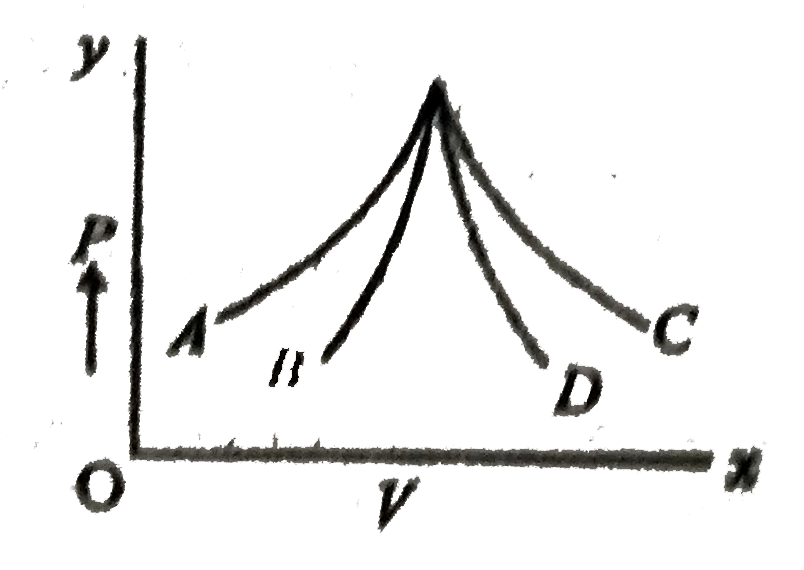
View SolutionAn ideal gas with adiabatic exponent (`gamma=1.5`) undergoes a process in which work done by the gas is same as increase in internal energy of the gas. Here R is gas constant. The molar heat capacity C of gas for the process is:
View SolutionIn internal combustion petrol/diesel engines, only cyclic processes are used, because:
View SolutionA diatomic ideal gas undergoes a thermodynamic change according to the P-V diagram shown in the figure. Tha total heat given to the gas is nearly (use ln 2 = `0.7`)

View SolutionIn a closed rigid container an ideal gas is filled. If the gas is heated, the graph of pressure (P) v/s root mean square speed (rms) will be :
View SolutionAn ideal gas undergoes a process consisting of adiabatic and isothermal process only as shown in the figure. Then :
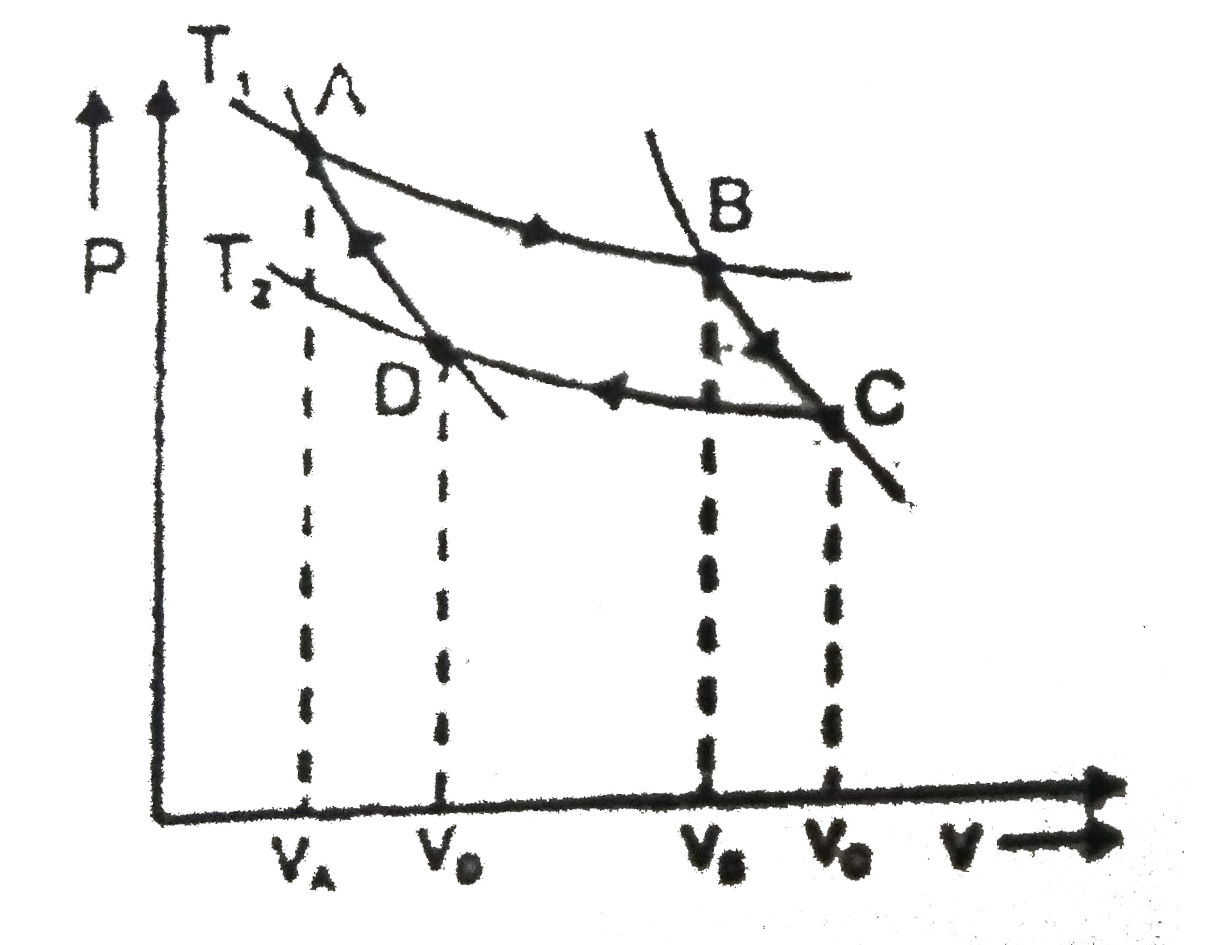
View SolutionA vessel is partly filled with liquid. When the vessel is cooled to a lower temperature, the space in the vessel unoccupied by the liquid remains constant. Then the volume of the liquid `(V_(L))`, volume of the vessel `(V_(V))` the coefficient of cubical expansion of the material of the vessel `(gamma_(V))` and of the liquid `(gamma_(L))` are related as :
View SolutionAn ideal monatomic gas is at `P_(0), V_(0)`. It is taken to final volume `2V_(0)` when pressure is `P_(0)//2` in a process which is straight line on `P -V` diagram. Then
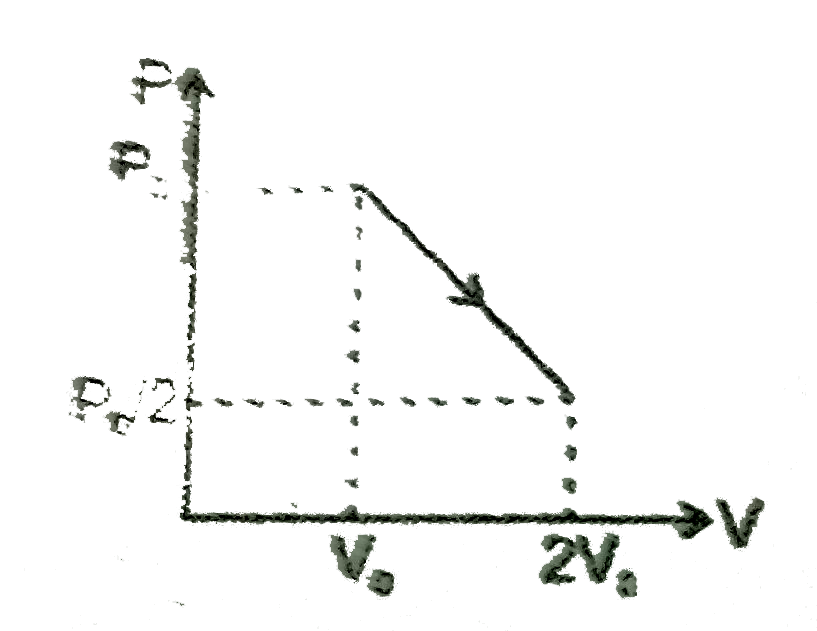
View SolutionThe value of `gamma=C_p/C_v ` for a gaseous mixture consisting of 2.0 moles of oxygen and 3.0 moles of helium. The gases are assumed to be ideal.
View SolutionFor an ideal gas four processes are marked as 1,2,3 and 4 on P-V diagram as shown in figure. The amount of heat supplied to the gas in the process 1,2,3 and 4 are `Q_1, Q_2, Q_3` and `Q_4` respectively, then correct order of heat supplied to the gas is : [AB is process-1, AC is process-2, AD is adiabatic process-3 and AE is process-4]
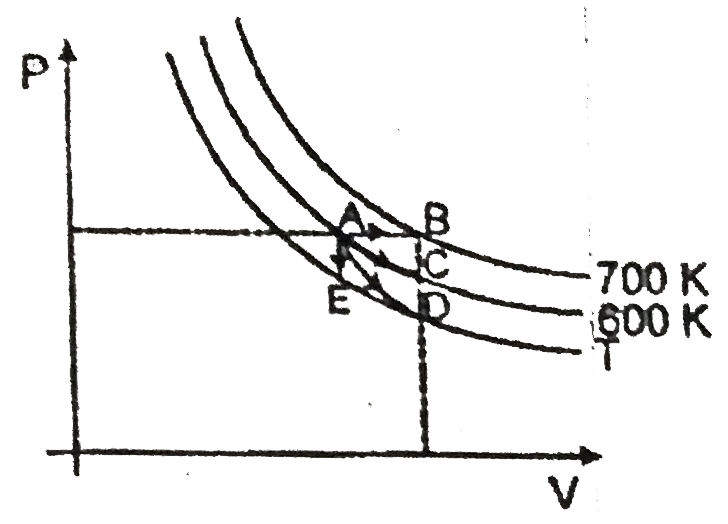
View SolutionA circular hole is made in a plate. The plate is now heated. Which of the following statements is/are correct?
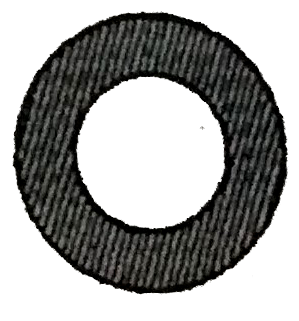
View SolutionAt pressure P and absolute temperature T a mass M of an ideal gas fills a closed container of volume V. An additional mass 2M of the same gas is added into the container and the volume is then reduced to `V/3` and the temperature to `T/3`. The pressure of the gas will now be:
View SolutionTwo identical rooms in a perfectly insulated house are connected by an open doorway. The temperature in the two rooms are maintained at different values. The room which contains more air molecules is :
View SolutionThe molar heat capacity of oxygen gas at STP is nearly 2.5R. As the temperature is increased, it gradually increases and approaches 3.5 R. The most appropriate reason for this behaviour is that at high temperature
View SolutionAn ideal gas heat engine operates in a Carnot cycle between `227^@C and 127^@C`. It absorbs 6 kcal at the higher temperature. The amount of heat (in kcal )converted into work is eqal to
View SolutionCurve in the figure shows an adiabatic compression of an ideal gas from `15 m^(3) to `12 m^(3)`, followed by an isothermla compression to a final volume of `3.0 m^(3)`. There are `2.0 "moles"` of the gas. Total heat supplied to the gas is equal to `: (ln2 = 0.693)`
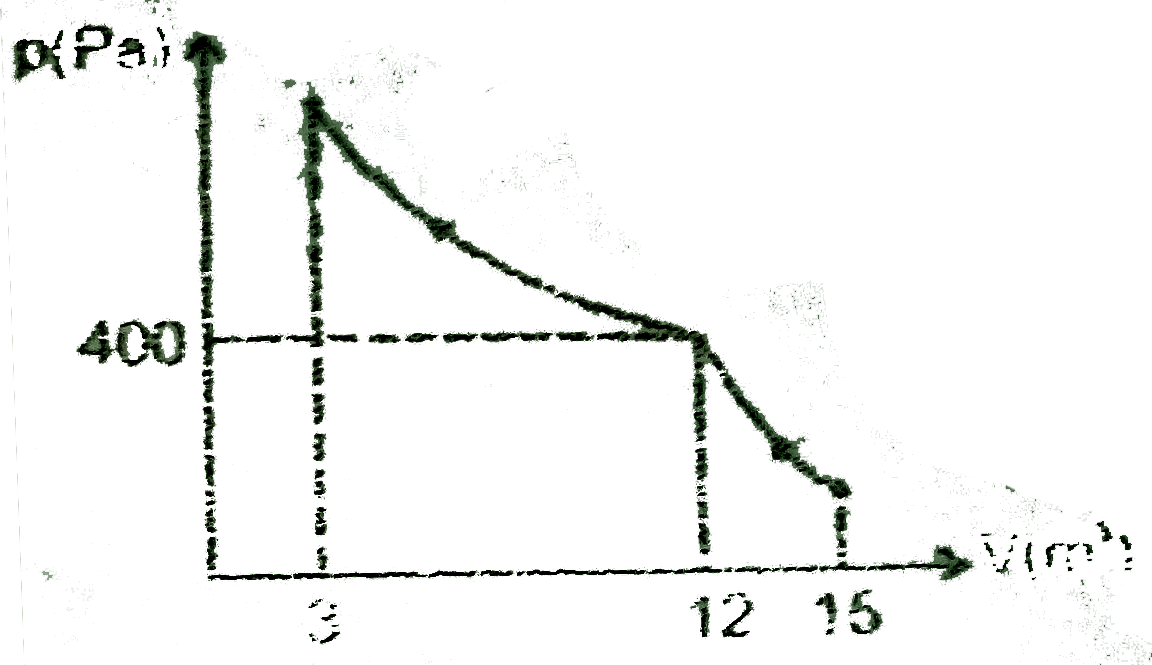
View SolutionIf there are no heat losses , the heat released by the condensation of x gram of steam at `100^@C` into the water at `100^@ C` can be used to convert y gram of ice at `0^@C` into the water at `100^@C` . Then the ratio of y : x is nearly
View Solution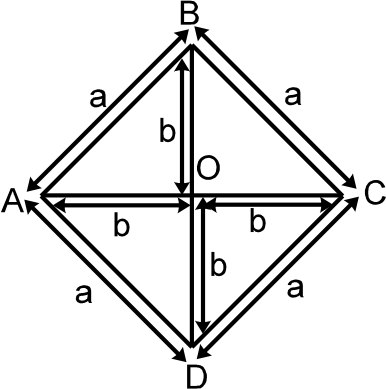
All the rods have same conductance `K` and same area of cross section A. if ends A and C are maintained at temperature `2T_(0)` and `T_(0)` respectively then which of the following is/are correct
View SolutionA conducting container containing an ideal gas (He) is kept in ice-water mixture for long time. Now the piston is suddenly moved up so that its volume becomes eight times. Final temperature of gas will be:
View SolutionOne litre of helium gas at a pressure `76 cm`. Of Hg and temperature `27^(@)C` is heated till its pressure and volume are double. The final temperature attained by the gas is:
View Solution`4 gm` of steam at `100^(@)C` is added to `20 gm` of water at `46^(@)C` in a container of negligible mass. Assuming no heat is lost to surrounding, the mass of water in container at thermal equilibrium is. Latent heat of vaporisation `= 540 cal//gm`. Specific heat of water `=1 cal//gm-^(@)C`.
View SolutionTwo elastic rods are joined between fixed supports as shown in figure. Condition for no change in the lengths of individual rods with the increase of temperature `(alpha_(1),alpha_(2)`linear expansion coefficient, `A_(1),A_(2)` =area of rods, `Y_(1),Y_(2)` =Young’s modulus) is:

View SolutionA partition divides a container having insulated walls into two compartments I and II. The same gas fills the two compartments whose initial parameters are given. The partition is a conducting wall which can move freely without friction. Which of the following statements is/are correct, with reference to the final equilibrium position?

View SolutionA uniform metallic object of circular shape which is free to expand in every direction is shown in figure. The parameter which will not increase on hearing the object is:
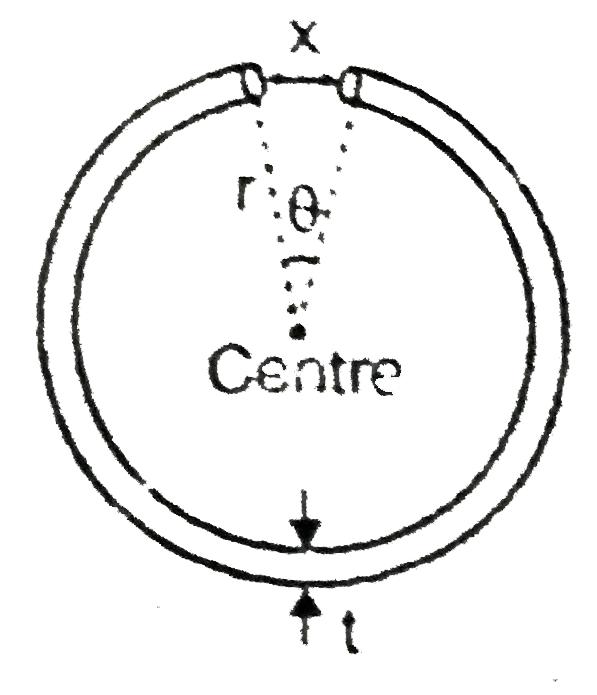
View SolutionIf the piston is moved so as to reduce the volume of gas by half keeping the temperature of gas constant, we know from the gas law that the pressure will be doubled. On microscopic level the increase in pressure on the piston is because
A. momentum change per collision is doubled while the frequency of collision remains constant
B. momentum change per collision remains constant while the frequency of collision is doubled
C. momentum change per collision and the frquency of collision both are increased
D. none of these two physical quantities are changed. It is due to some other reason.
View SolutionTwo rods of same length and areas of cross section `A_1` and `A_2` have their ends at same temperature. If `K_1` and `K_2` are their thermal conductivities, `C_1` and `C_2` their specific heats and `rho_1` and `rho_2` are their densities, then the condition that rate of flow of heat is same in both the rods is
View SolutionA rod of length l and cross-sectional area A has a variable conductivity given by `K=alphaT`,where `alpha` is a positive constant and T is temperatures in Kelvin. Two ends of the rod are maintained at temperatures `T_(1)andT_(2)(T_(1)gtT_(2))`. Heat current flowing through the rod will be :
View SolutionA Carnot engine takes `3xx10^6cal`. of heat from a reservoir at `627^@C`, and gives it to a sink at `27^@C`. The work done by the engine is
View SolutionStatement 1: A gas has a unique value of specific heat.
Statement 2: Specific heat is defined as the amount of heat required to raise the temperature of unit mass of the substance through unit degree.
View Solution
Exercise questions and complete solutions for chapter PART TEST 2 of RESONANCE ENGLISH of Class 11